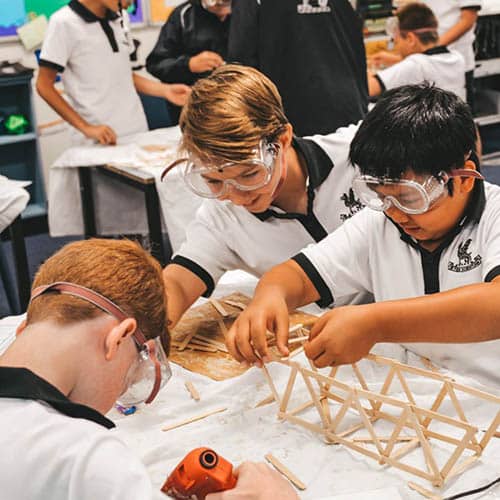Traditionally we often have seen school STEM challenges as something that is usually done within a classroom or across a grade. The students get to work with each other face to face to solve their challenge and then the students work together as part of project-based learning or during a 1-day extravaganza.
Let’s take this to another level!
Large STEM projects outside of schools involve multiple organisations collaborating digitally on a shared project, creating components separately that are eventually assembled together. With remote teaching comes the opportunity for students to emulate this process in a low-resource environment. There are challenges here, but also opportunities!
Coordinating component builds between isolated student groups
Think of the space industry. When a rocket is designed and built, it is not by people all the same building. Often it is by separate organisations not just separated by distance but also language! Thousands of components need to come together to make these awesome craft lift off the ground safely. To do this, several things need to happen (shortened significantly for this article!);
- Following a successful tender process for the rocket, the design phase is carefully orchestrated by engineers, technology integrators, scientists and more by the organisations involved.
- Computer-aided designs are shared between organisations, or at the very least different departments of a massive company.
- Throughout the design phase, intellectual property & contracts are dealt with as well as the economies of the build & the inherent logistical constraints. This is well before materials are sourced and turned into components!
- As the project enters the construction phase, purchase orders are made based on cash flow projections and the engineers work closely with the sites that are building the components to ensure that the components are built to specification as well as on time. Project milestones need to be met successfully and on budget for their continued involvement in the rocket build.
- As components are assembled offsite, logistical managers work in tandem with these separate organisations to bring the components into the vehicle assembly area. These parts are inspected against the designs as part of the quality assurance process.
- The assembled components are tested, over and over again. Adjustments are made as part of the iterative design process.
- Once the key performance indicators are met to the satisfaction of the executive team, the rocket that will head to space is assembled and checked/rechecked again all the way until its time to launch!
Can you challenge students to emulate this process with a series of STEM Mini-builds?
Consider taking your STEM challenges to the next level by adding extra layers of complexity! Some questions to think about;
- Can you have students create schematics together via shared files? Zoho, Dropbox, Google Drive and others all allow for this process.
- Is it possible for your students to work collaboratively on the project remotely? How can they communicate effectively and keep work to time & on budget? Zoho, Microsoft Teams, Google Classroom, Trello , Slack and others can help you here.
- Knowing your class, is it possible for students to be broken up into groups that only make certain parts of your STEM project? Can they accurately plan the size, shape and configuration of individual components together? Tinkercad and others can help here.
- Can your students work over a web conference? Zoom, Zoho, Webex, Teams, Meets and more will help you here. Just make sure child protection controls are in place.
- What are the resource constraints for your students? What can they build using the tools they have on hand? How will they overcome resource of tool shortages?
STEM Mini-builds are all about that extra challenge! In this case, the students still work together however they are not allowed to be in the same room for the final assembly. Will their design & project management mean that their components will fit together and work as planned? Only time will tell!
Now of course, this project-based learning is high risk. This is asking students to act in a fashion that takes some adults years to master. Coordination with remote groups on a STEM build in a design think environment is not easy! Still, we often hear about how we should emulate the word outside of schooling. When you think about it, the structure in a school already allows this process;
- The physical boundaries created by the four walls of a classroom create the silos needed to produce separate ‘organisations’ who must collaborate digitally.
- Schools have already setup digital communication channels, especially after the COVID-19 outbreak.
- Students have the ability to collaborate in a digital environment, they just need a reason to do so.
Is this something you should try? Well, I guess it’s up to you and your colleagues! Still, its an opportunity to consider should you think that your students would be interested to give it a shot. Of course, it might well fall apart and nothing works. But then again, it just might work too! Perhaps taking on a STEM Mini-build challenge in your school just might be your next moonshot.
Happy teaching,


























Comments